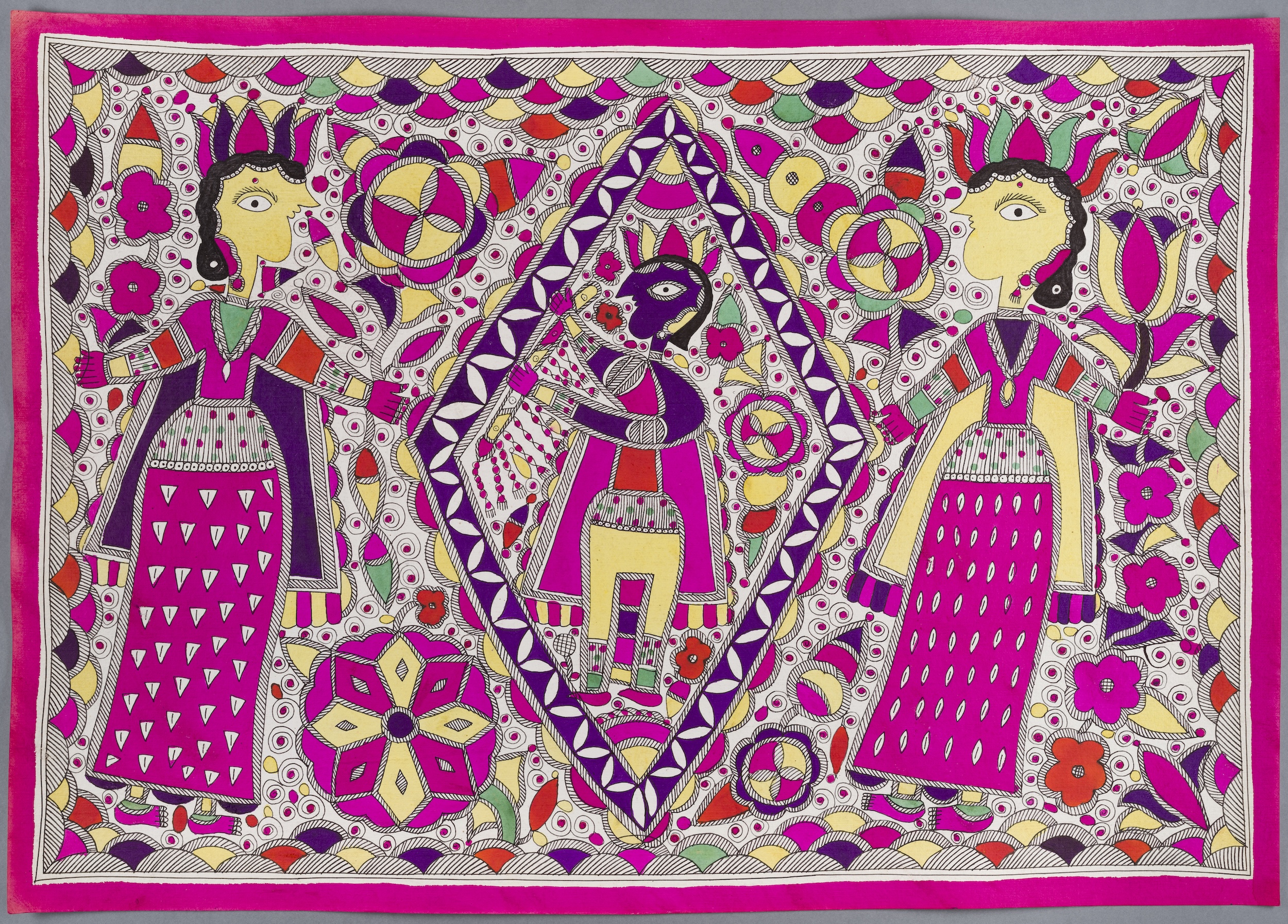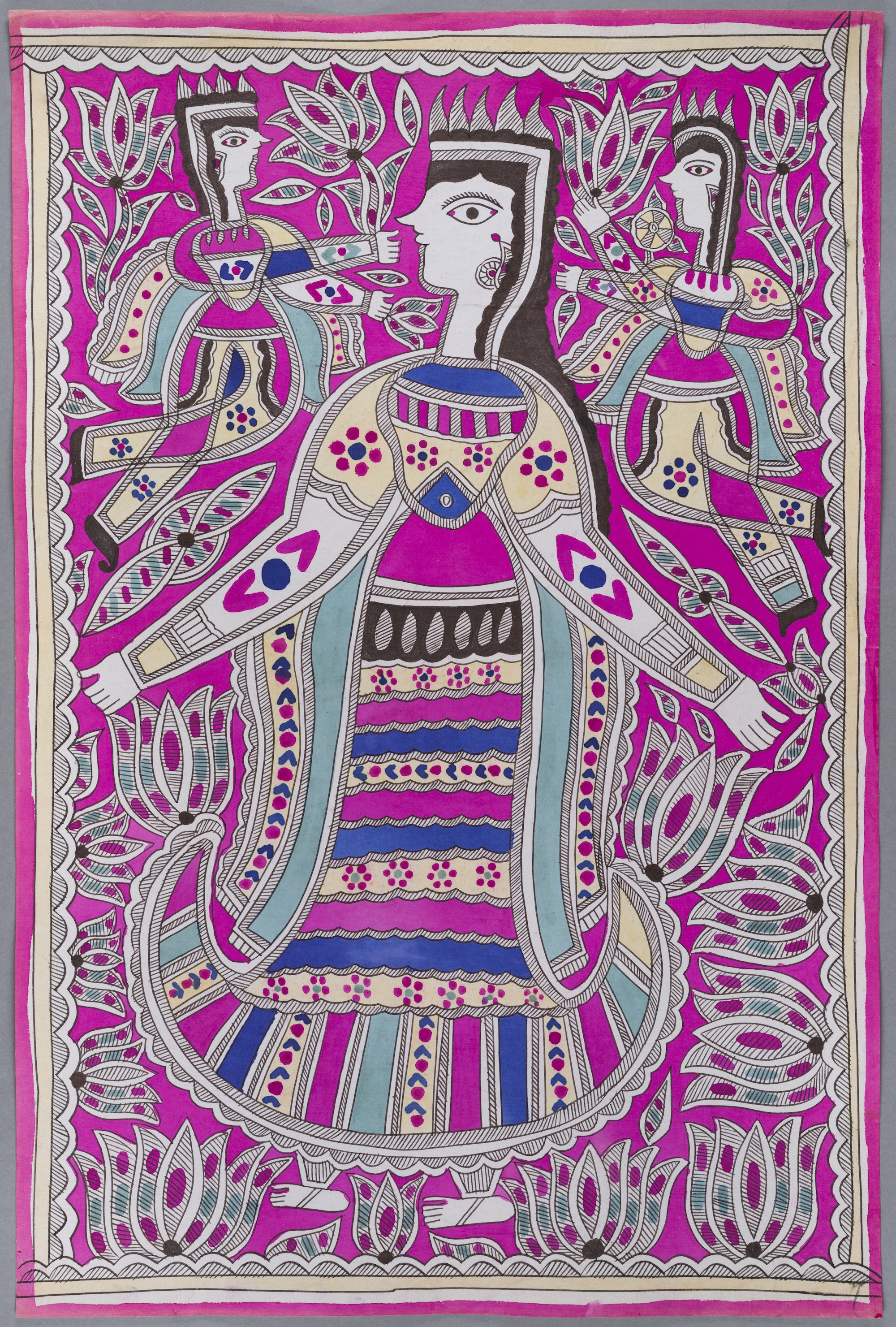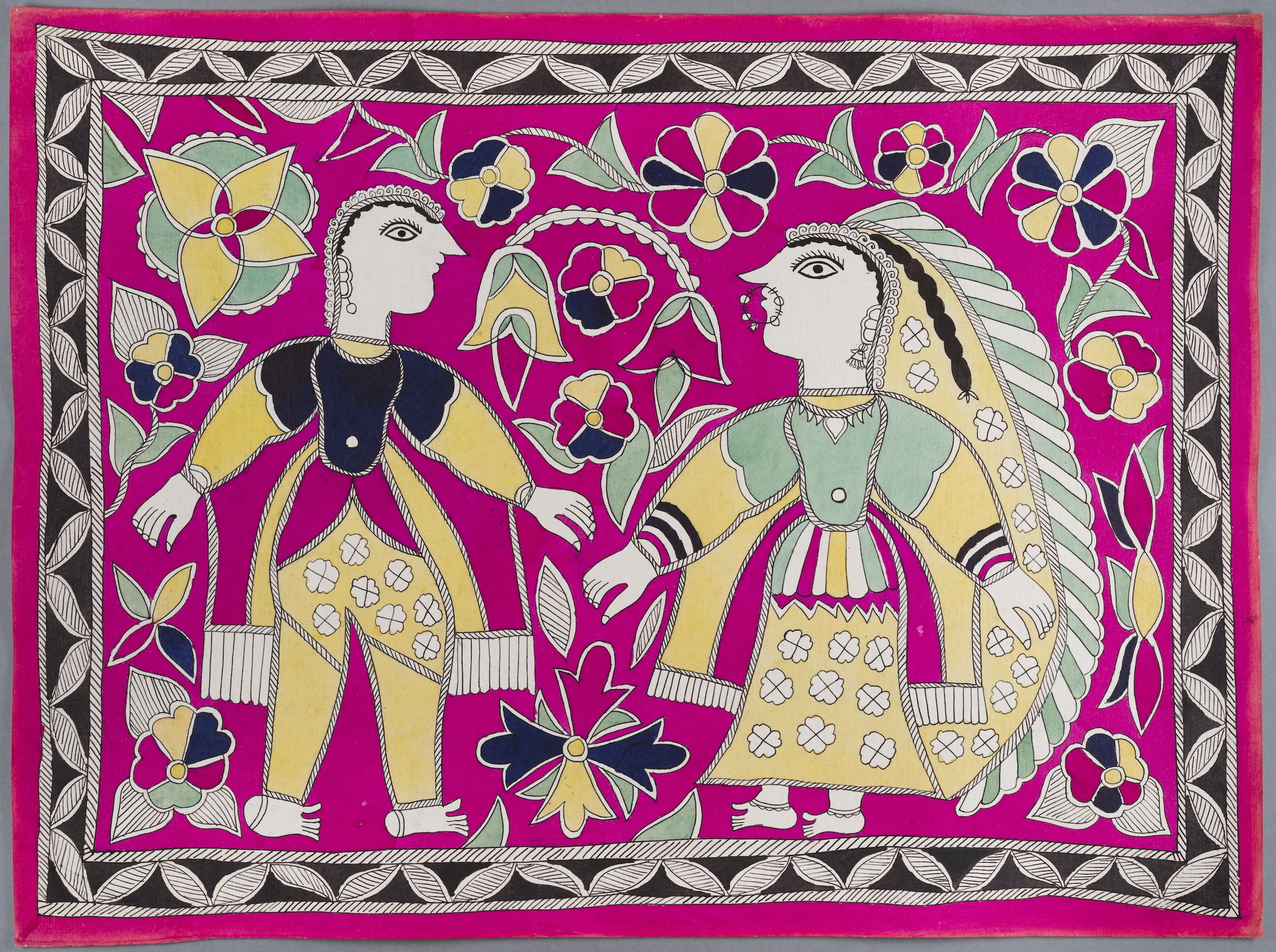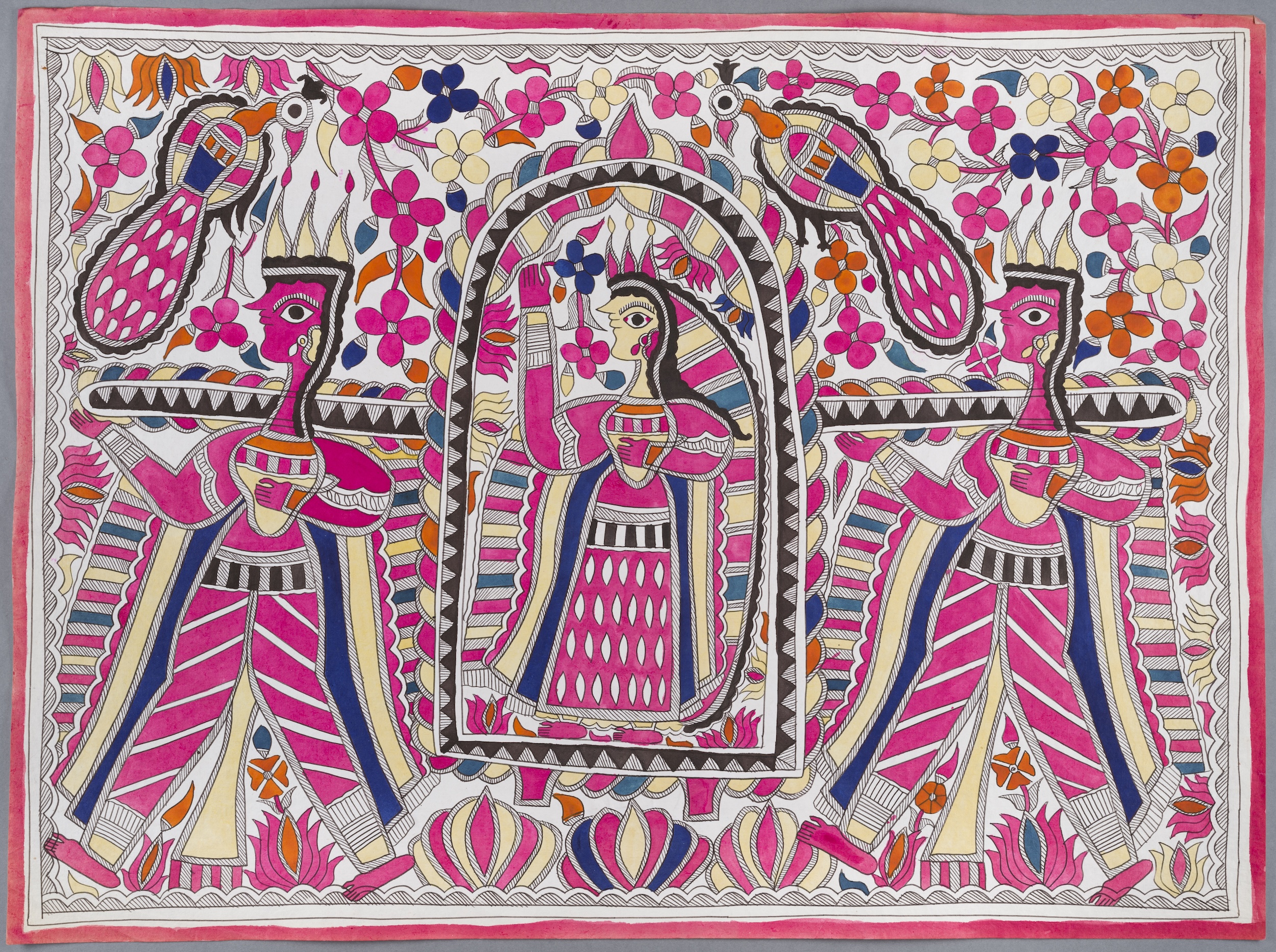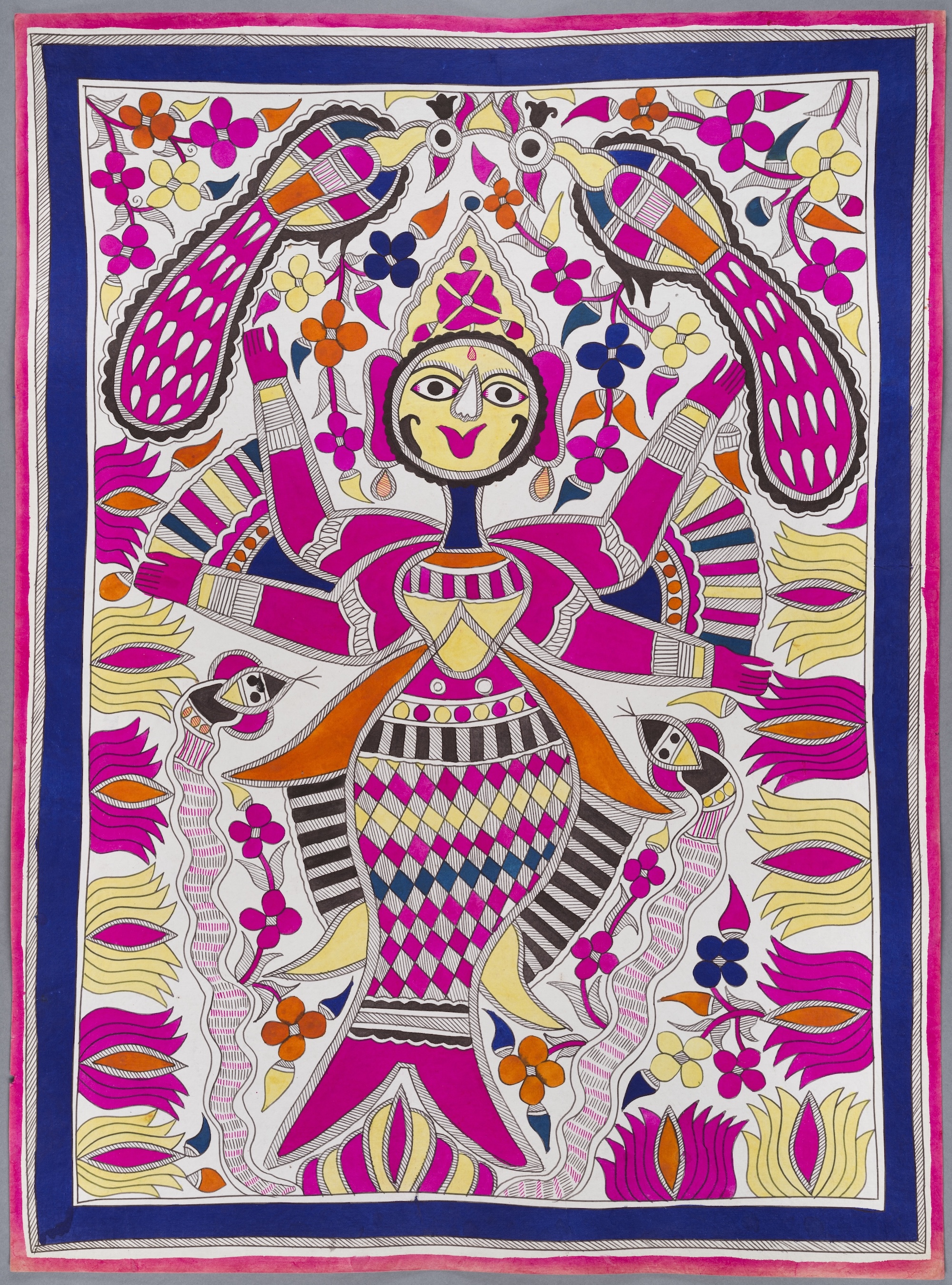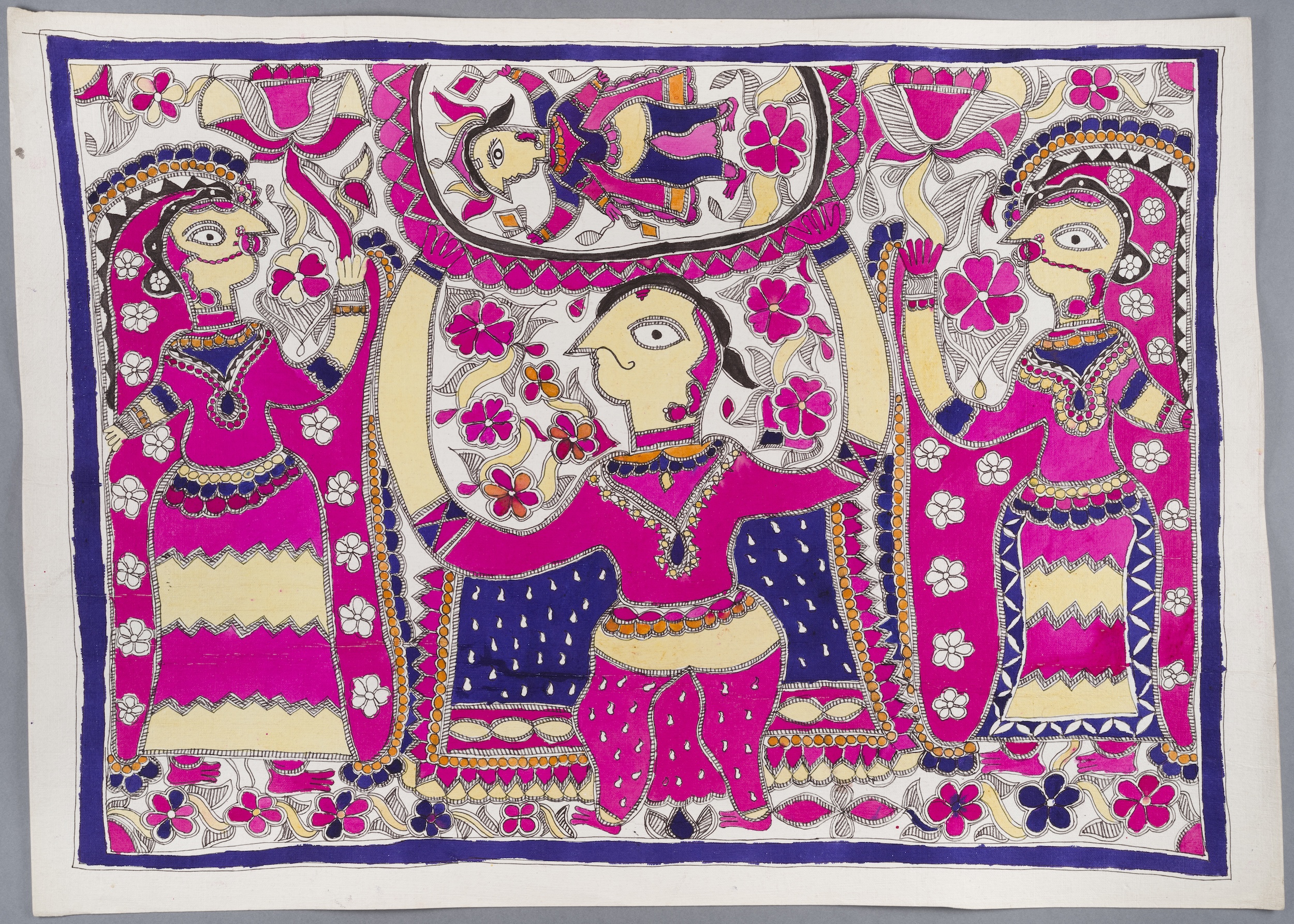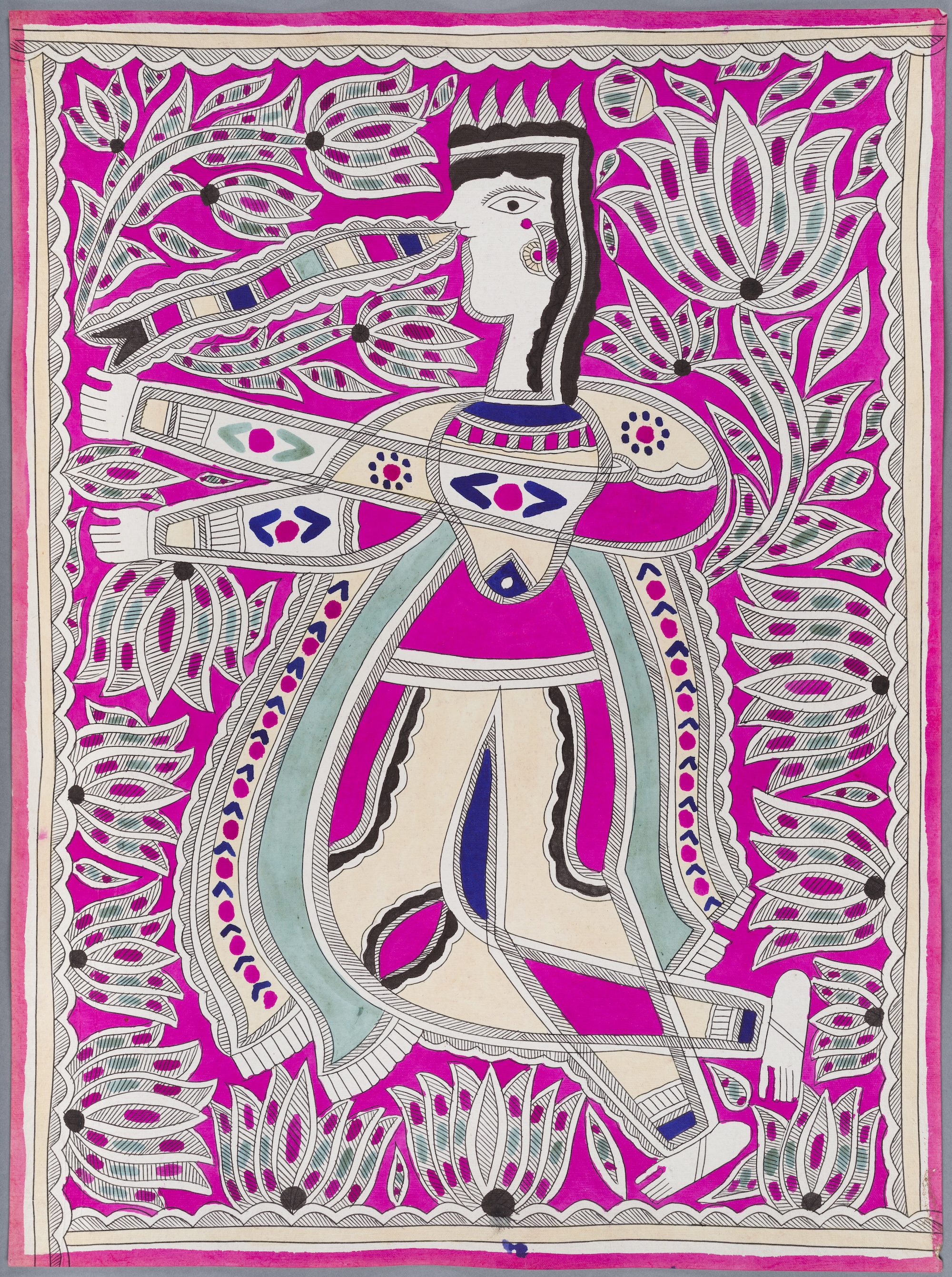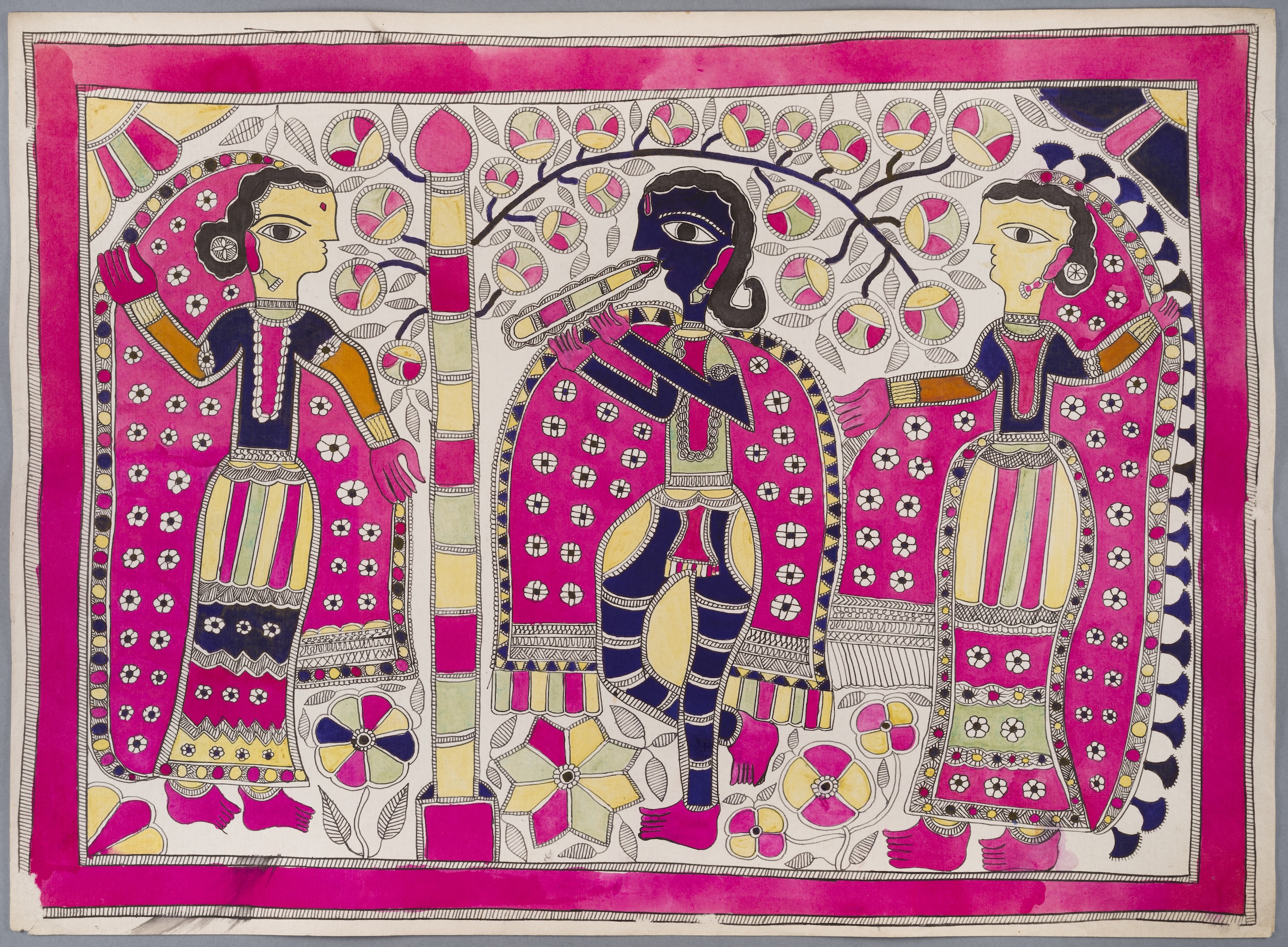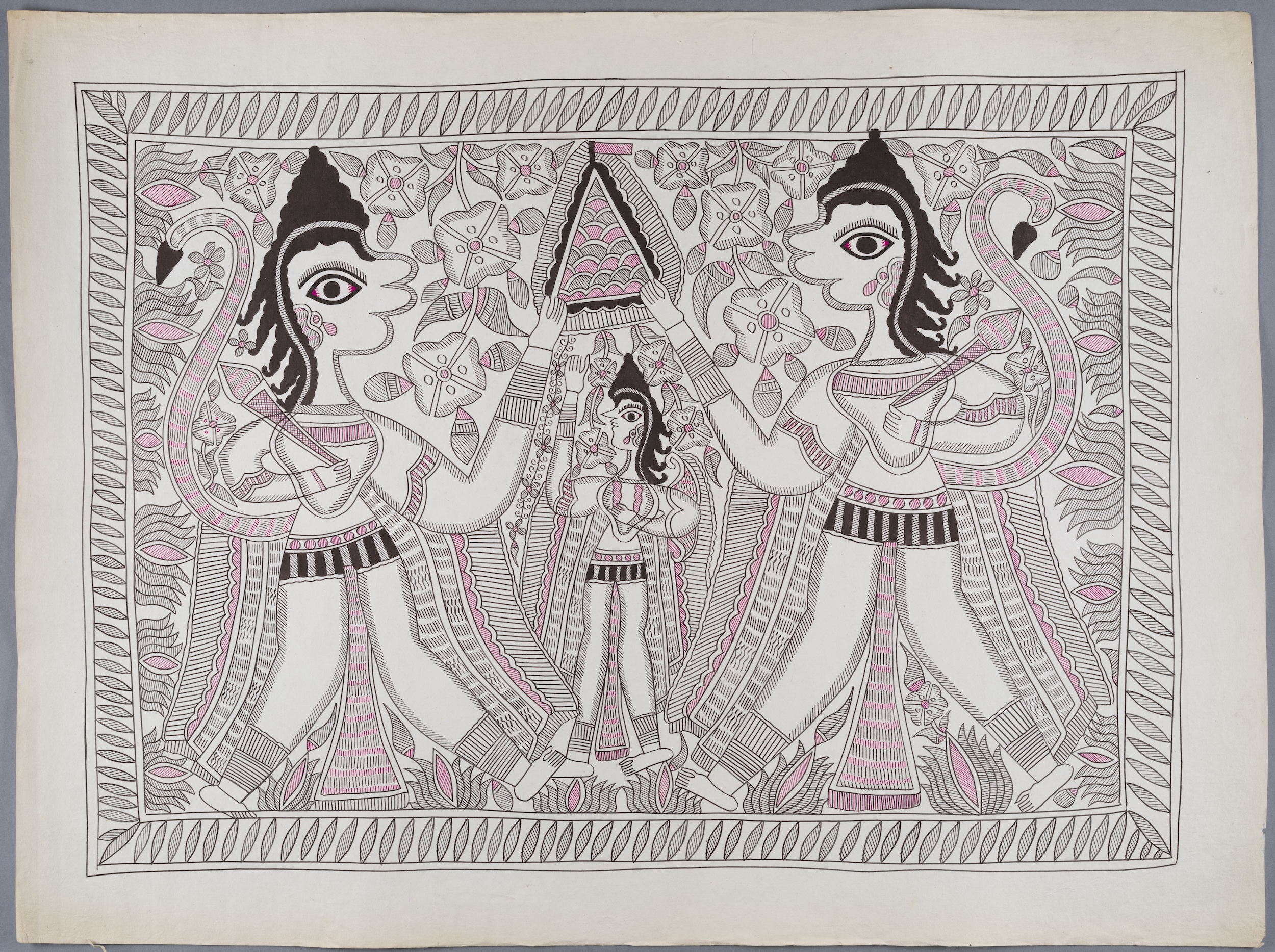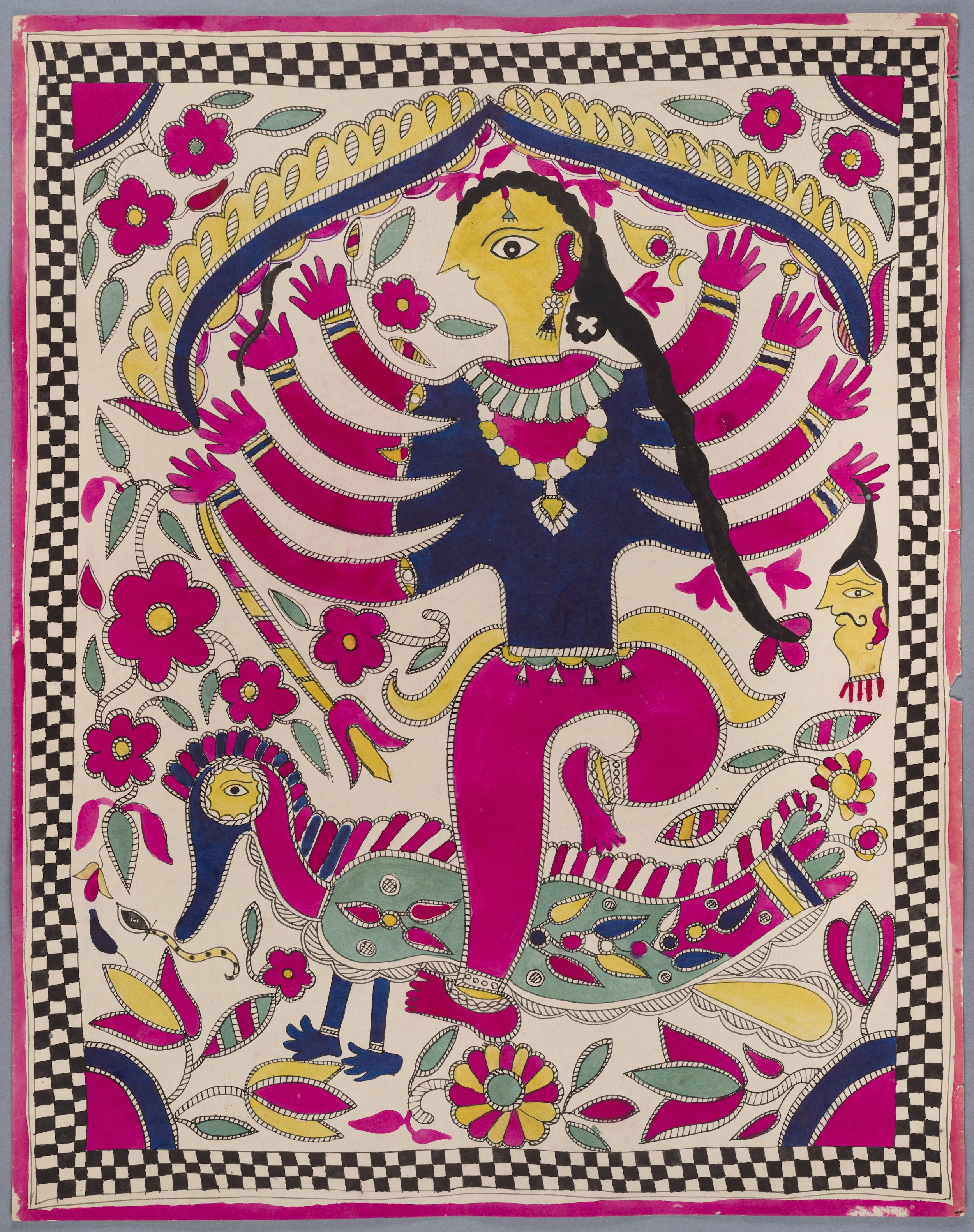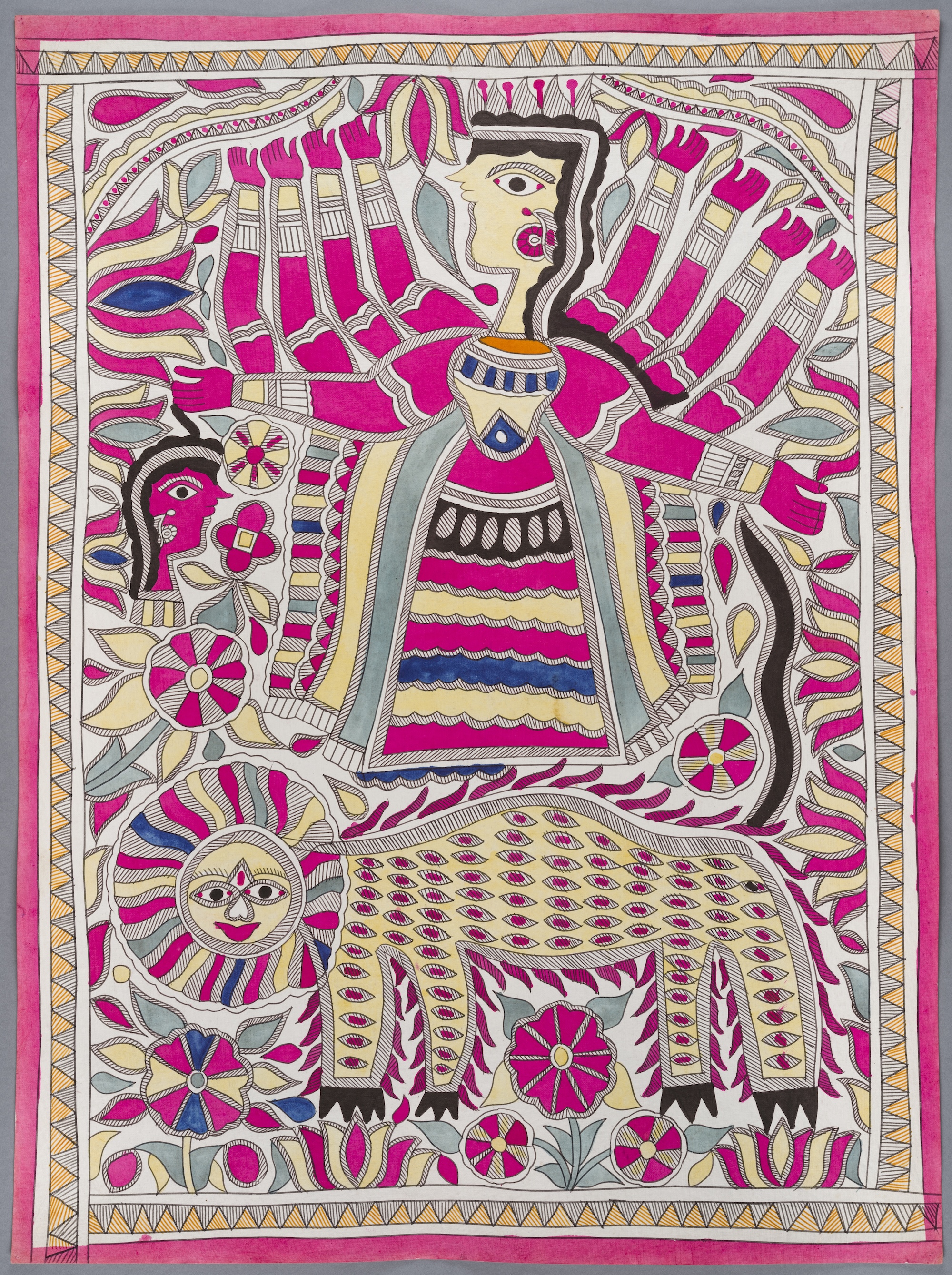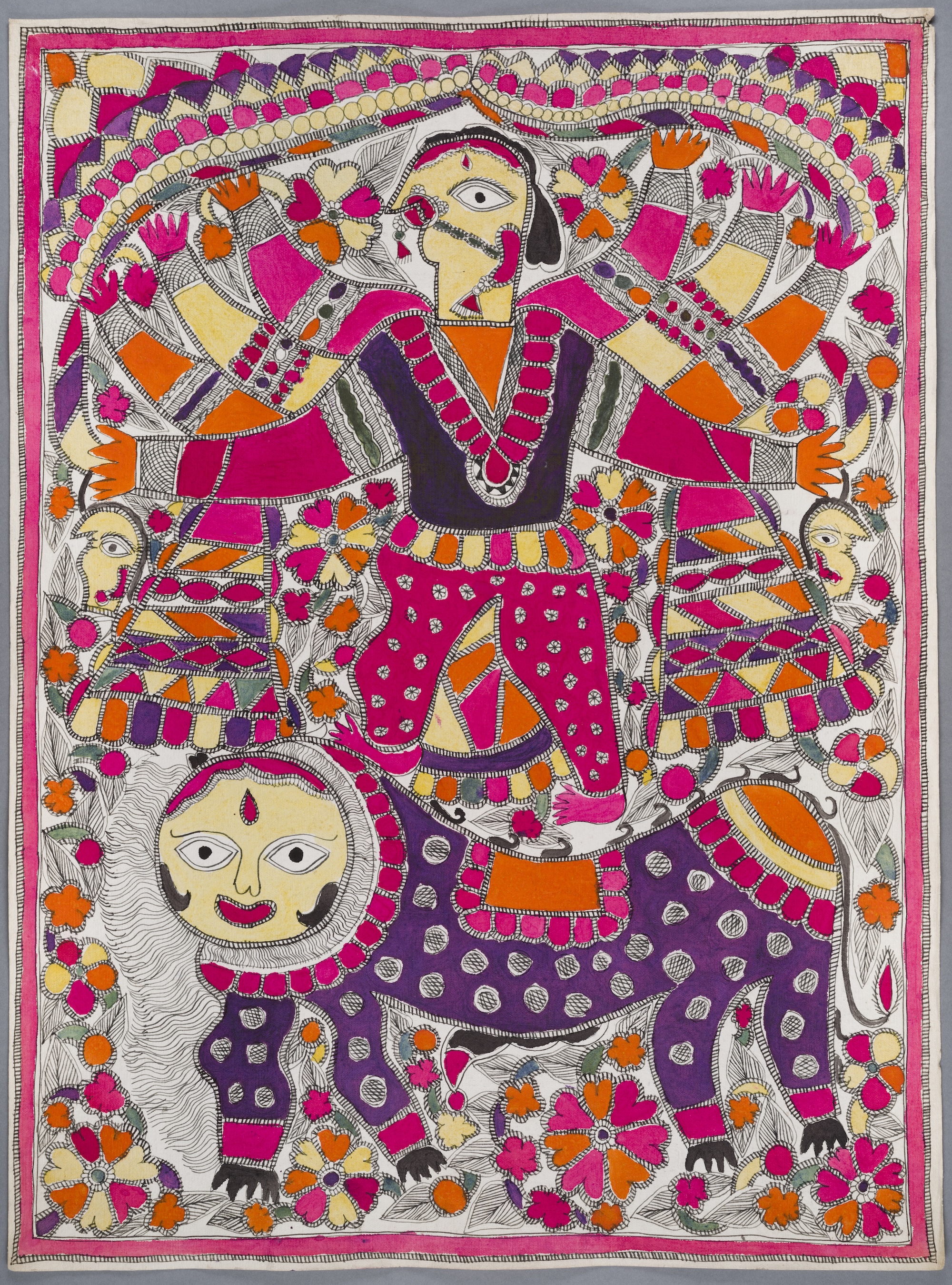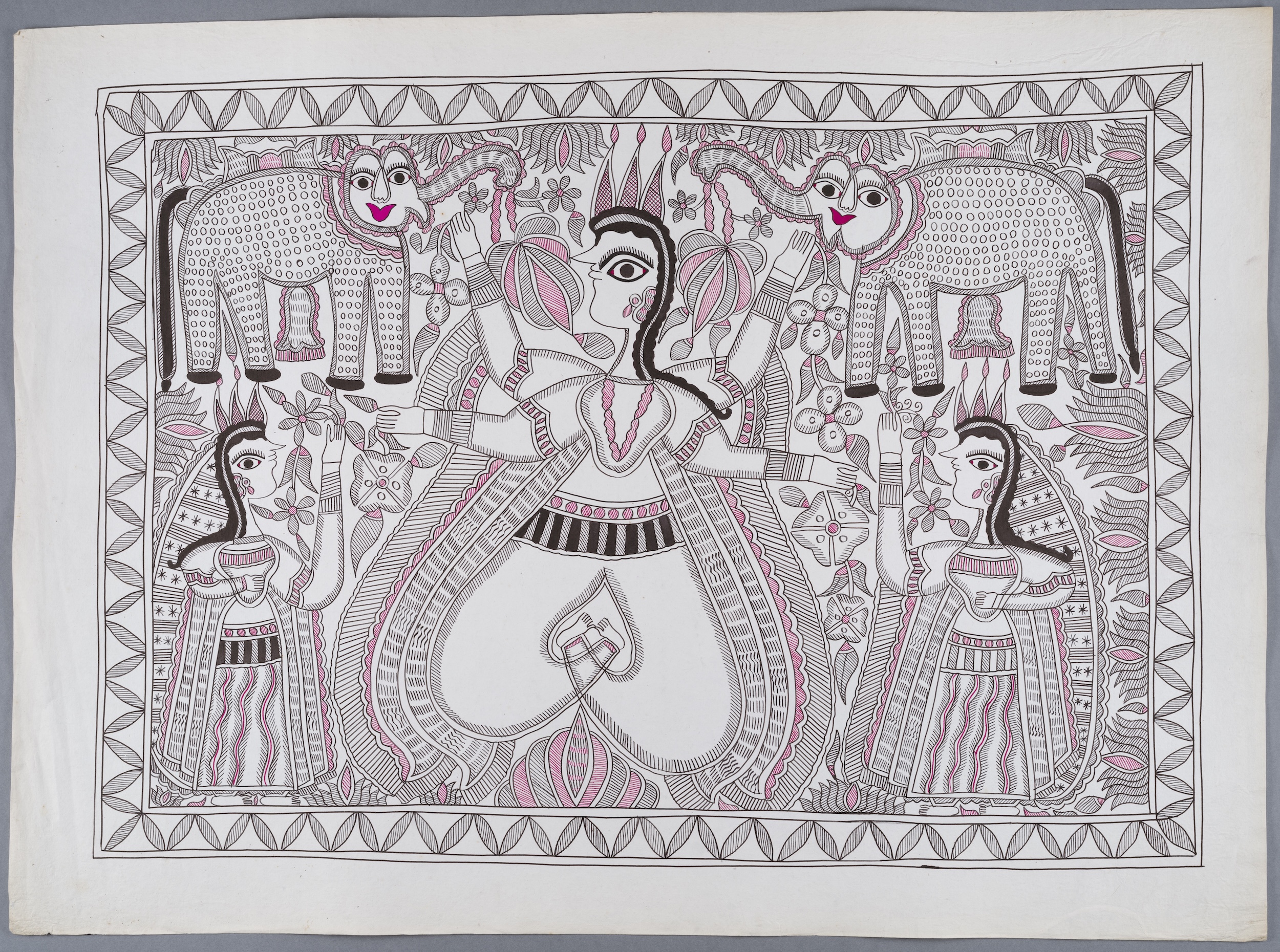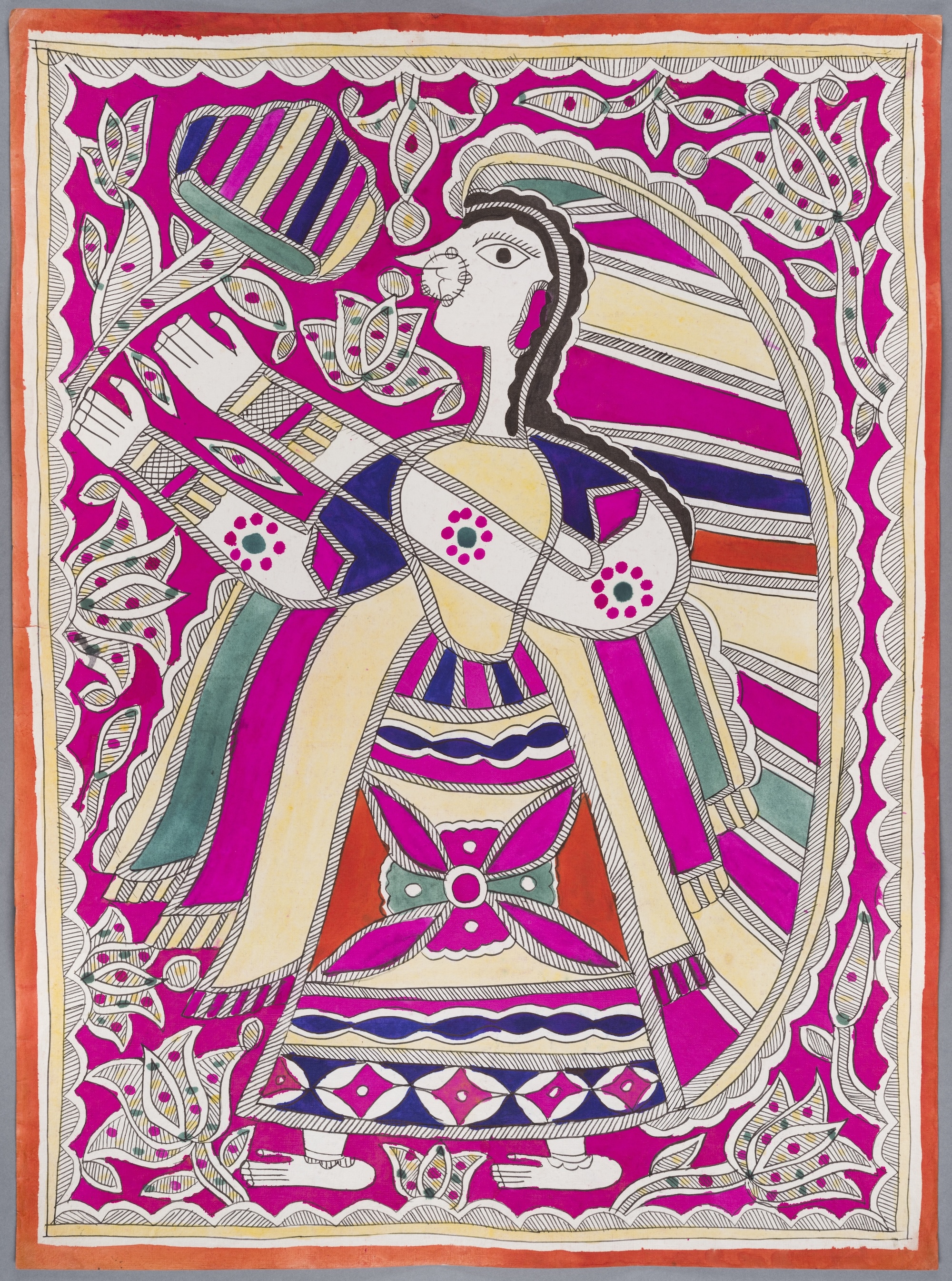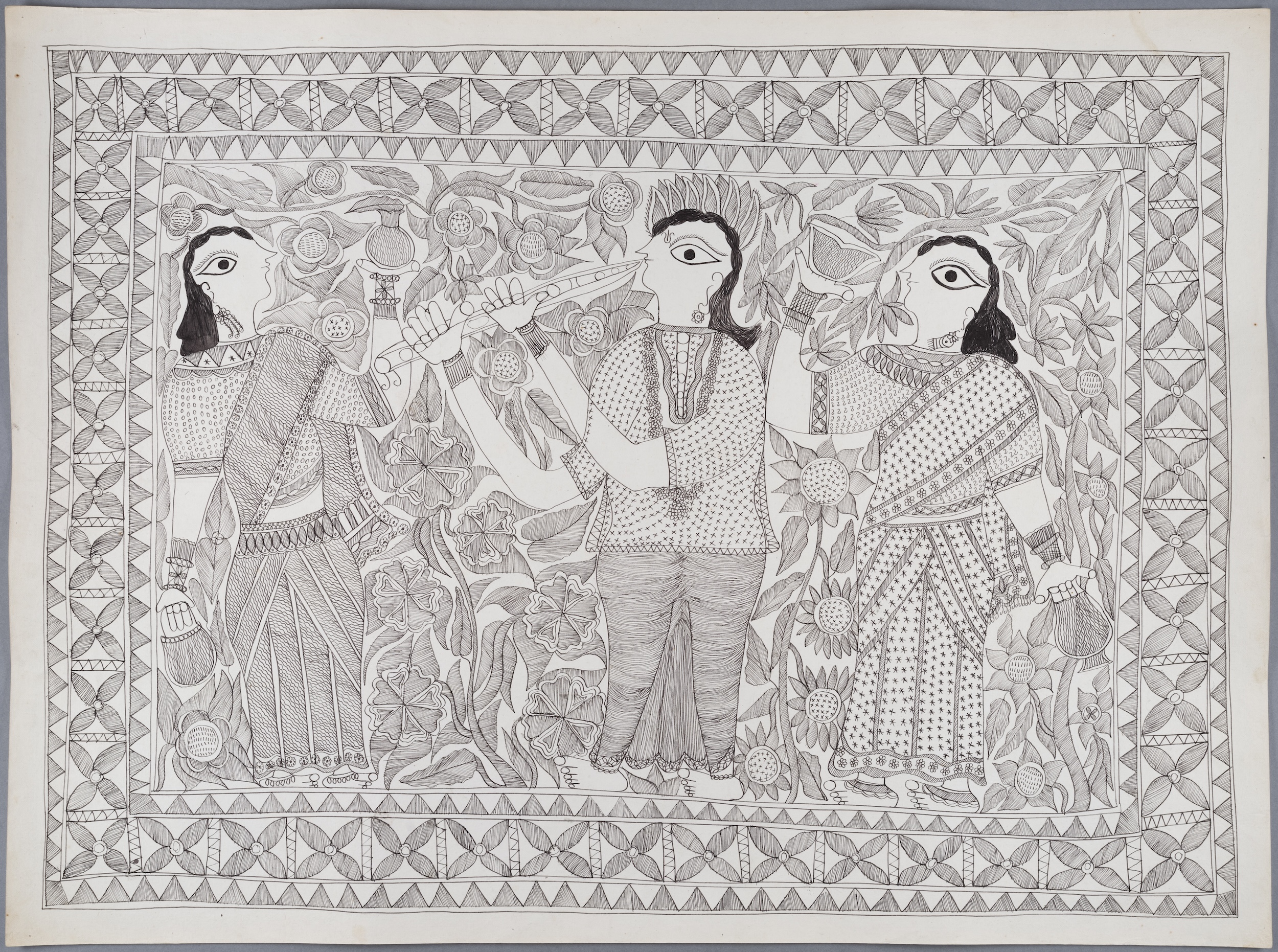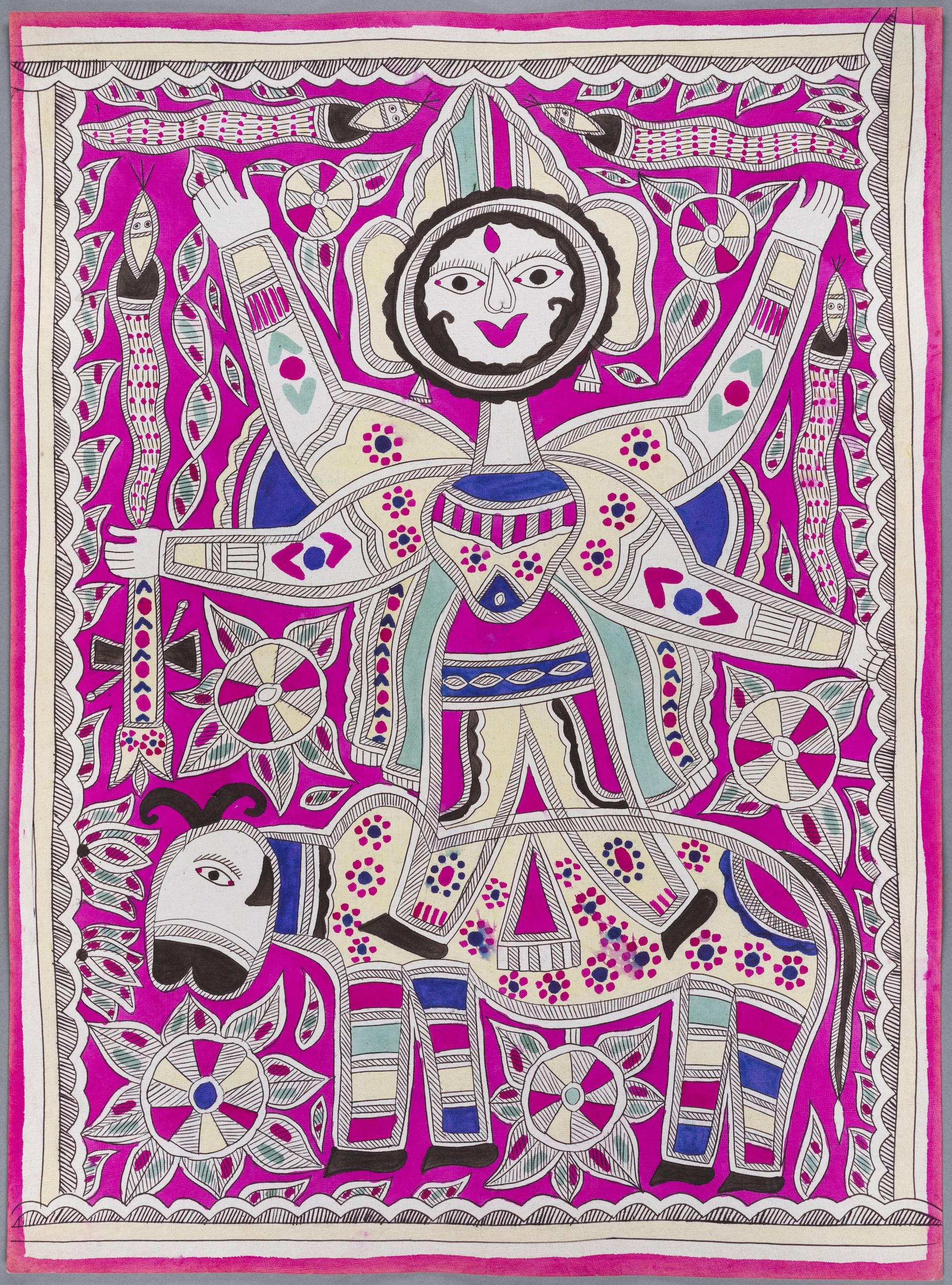Mithilla - An old Dutch collection of female folk art paintings from Bihar, India
28 October - 6 November (extended)
Mithila art, also known as Madhubani painting, is a traditional art form, from the Mithila region of Bihar, India, and parts of Nepal. Historically created by women, these paintings originated as Khobar – vibrant murals celebrating marriage, painted on the walls of marriage chambers to invoke blessings of prosperity, fertility, and good fortune.
The compositions often depict mythological or devotional scenes, featuring deities and narratives from Hindu mythology, especially the Ramayana. Artists also portray scenes of village life, particularly marriage rituals and festive gatherings. Each work is embellished with intricate patterns of flowers, plants, and often animals, each motif carrying a symbolic significance. Together, these elements express a deep reverence for nature and reflect the enduring cultural and spiritual heritage of the Mithila community.
While each artist brings a distinctive flair to their work, two principal styles define Mithila painting. The Bharni style features bold outlines, filled with bright, flat areas of colour, creating vivid, expressive compositions. The Kachni style relies on intricate linear marks and decorative patterns, rendered in black ink to achieve texture and shading.
Following devastating floods in the region during the 1960s, Mithila women were encouraged to transfer their art from walls to paper, as a means of income and economic security. Using both natural and synthetic pigments on handmade or commercial paper, artists transformed this traditional practice into a modern expression of resilience and creativity.
Like many forms of folk and women-driven art, Mithila art has long been undervalued by Western scholars and institutions. In recent years, however, it has begun to receive a deserved spotlight through prominent exhibitions, such as Painting is my Everything, at the Asian Art Museum in 2018, which showcased works by contemporary Mithila artists, including recognised Masters. Among these artists was Bachha Dai Devi, seven of whose paintings are featured in this online collection.
The series exhibited here features a selection of devotional narratives and scenes from daily life, rendered in both the Bharin and Kachni styles. The unique provenance of these works - acquired in India in the 1970s by Marion van Stekelenburg-Greidanus - highlights their significance as early examples of Mithila paintings produced during a pivotal period of transition. They embody both the movement away from traditional mural practices and the continuation of a deeply rooted artistic, social, and devotional tradition passed from mother to daughter across generations.

